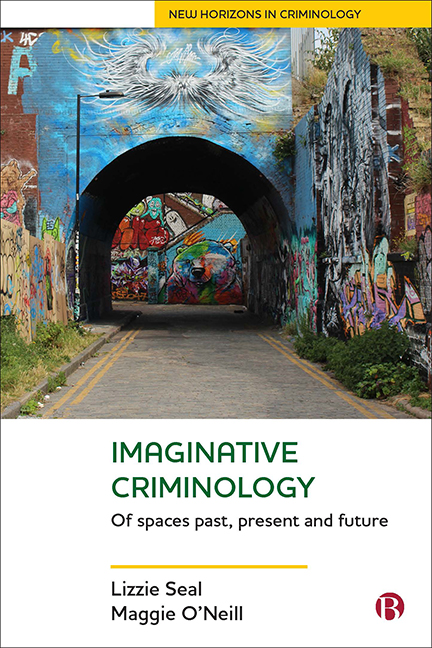Book contents
- Frontmatter
- Contents
- List of figures and tables
- Preface
- 1 Imaginative Criminologies of Space: the Spaces of Imaginative Criminology
- 2 Historical Spaces of Confinement 1: Homes for Indigenous Children in Australia
- 3 Historical Spaces of Confinement 2: Magdalene Laundries
- 4 Creative Writing and the Imagined Spaces of Imprisonment
- 5 Border Spaces and Places: the Age of the Camps
- 6 Imagining Spaces of Violence and Transgression in Vancouver and Northern Ireland
- 7 Imagining Dystopian Futures in Young Adult Fiction
- 8 Conclusion
- References
- Index
4 - Creative Writing and the Imagined Spaces of Imprisonment
Published online by Cambridge University Press: 30 April 2022
- Frontmatter
- Contents
- List of figures and tables
- Preface
- 1 Imaginative Criminologies of Space: the Spaces of Imaginative Criminology
- 2 Historical Spaces of Confinement 1: Homes for Indigenous Children in Australia
- 3 Historical Spaces of Confinement 2: Magdalene Laundries
- 4 Creative Writing and the Imagined Spaces of Imprisonment
- 5 Border Spaces and Places: the Age of the Camps
- 6 Imagining Spaces of Violence and Transgression in Vancouver and Northern Ireland
- 7 Imagining Dystopian Futures in Young Adult Fiction
- 8 Conclusion
- References
- Index
Summary
Continuing the focus on confinement, this chapter explores findings from two different creative writing projects with male prisoners in HMP Durham and HMP Lewes. Both of these, in different ways, drew on archival sources as inspiration for forms of creative writing – ghost stories in the case of Durham and poems in the case of Lewes – and involved collaborating with writers. Both prisons are category B institutions, meaning that they are closed and have people awaiting trial and/or sentencing, as well as sentenced prisoners who are judged not to need maximum security conditions but must be confined. We present imaginative criminology based on creative, participatory methods that engaged participants’ personal biographies through their fictional and poetic work. This is the first of three chapters that also draws on arts-based walking methods. In presenting examples from participants’ writing in the forms of poems and stories, we analyse them as creative writing, rather than simply as exercises of rehabilitative programming. In particular, the writing conveys the significance of the sustaining role of memory and openness to the future, as well as the multiple boundaries between the inside and the outside.
The spaces of imprisonment
Incarceration in prison is fundamentally based on spatial tactics. Prisoners experience both the enforced fixity of incarceration in a secure institution and forced mobility between institutions at the behest of others (Martin and Mitchelson, 2009). Carceral geography examines what prisons reveal about the production of space, the role this plays in enabling forms of state control based on confinement but also the agency of the confined in challenging the associated assaults on their identity (Martin and Mitchelson, 2009; Jewkes, 2013; Moran, 2015). For nearly all prisoners in the UK, prison is not a ‘terminal destination’ but rather for a certain period. Confinement to a particular space as punishment is spatial and temporal. Drawing on Dodgshon (2008), Moran (2012) conceptualises this as ‘time-space’: the interdependency of space and time. The length of a sentence is externally controlled but also experienced personally and variably. For example, younger prisoners may feel like they are suspended in time and are consequently oriented to the future and release. Older prisoners may be more conscious of the physical changes wrought to their bodies as they age inside (Medlicott, 1999).
- Type
- Chapter
- Information
- Imaginative CriminologyOf Spaces Past, Present and Future, pp. 55 - 72Publisher: Bristol University PressPrint publication year: 2019



